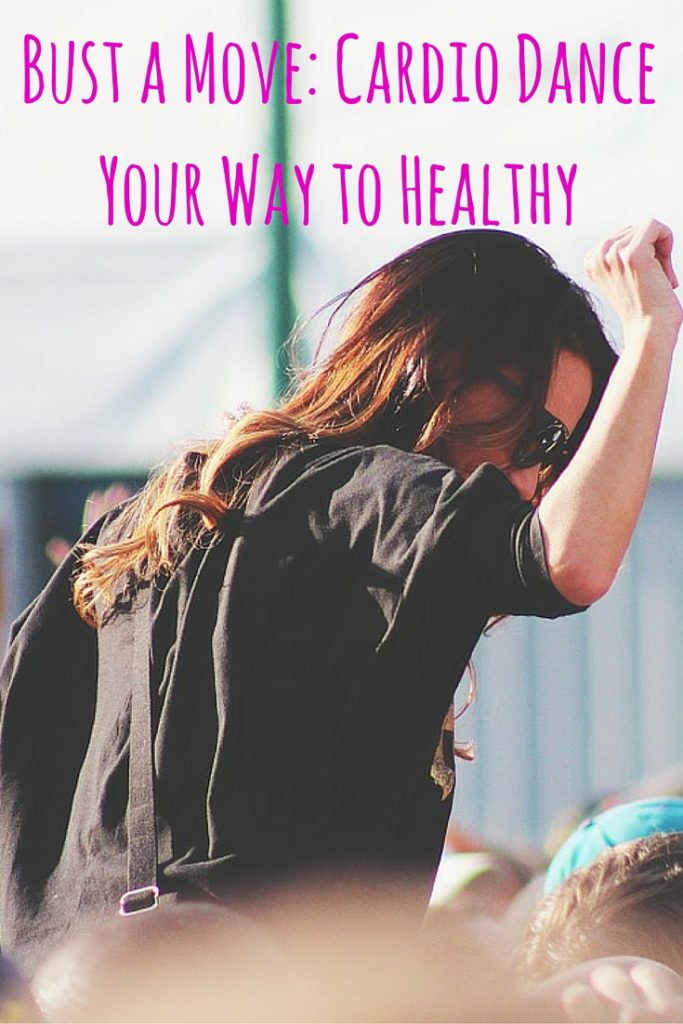
Can Cardio Dance Improve Your Health?
Dancing for fun or a good cardio dance workout can do wonders for your physical and mental health. Nothing like busting a move and blasting calories! Here’s how cardio dance exercise can help you!
Cardio Dance Exercise: The Benefits of Dancing
Dancing is a fun activity that gives you plenty of opportunity for self-expression and social interaction.
But did you know that participation in dance can help you improve your health? Before your next party, take the time to review some important tips that will show you how to safely incorporate your upcoming dance lessons into an exciting, health-building routine.
Dancing Supports Good Physical Health
 Regardless of your age, weight, or fitness level, you can usually find a form of dance that promotes and supports good physical health. Participation in dancing can help you gain muscle strength, as well as increase your muscle tone and your level of muscle endurance.
Regardless of your age, weight, or fitness level, you can usually find a form of dance that promotes and supports good physical health. Participation in dancing can help you gain muscle strength, as well as increase your muscle tone and your level of muscle endurance.
Dancing can also improve your balance, help you overcome any problems with your everyday walking stride or gait, and improve your awareness of your body in relation to your surroundings.
If you have concerns about declining bone density and current or future risks for developing osteoporosis, it’s important to note that a regular dance routine can increase the strength of your bones and help keep osteoporosis at bay as you age.
Dancing is also an excellent way to get aerobic exercise and improve the function of your cardiovascular (heart and blood vessel) system.
In addition, dance participation can help you keep your weight down and avoid any short- or long-term risks for obesity.
Dancing Supports Good Mental Health
Participation in dancing also has important benefits for your mental health and well-being. First, the physical accomplishments of learning how to dance can boost your self-esteem and make you feel more confident. In turn, this improved outlook on life can lead to an overall increase in your level of psychological/emotional wellness.
Like other forms of aerobic activity, dancing can also improve your brain function and increase your mental clarity. In addition, because it’s typically a social activity, dancing can improve your social interaction skills and help you feel more comfortable in group environments.
Gearing Your Dance Lessons to Your Fitness Level
Before you choose the dance style for your lessons, you may want to consider your fitness level and your goals for dance participation. Some styles feature high-intensity movements and therefore may be more suitable for people who have already developed a solid base of physical fitness. On the other hand, if your fitness level is lower, you may want to start with a relatively low-intensity dance style that won’t overtax your current physical capacity.
Your motivations also play an important role. If you’re learning to dance in order to increase your fitness level, you may choose to learn a different dance style than someone who needs to learn a specific style for a special event or occasion. Similarly, if you have long-term goals to dance at a professional level and take part in competitions, you may have different dance preferences than someone who just wants to have some weekend fun at a local club or honky-tonk.
Of course, you may have several motivations for learning how to dance, and fitness may or may not be your main consideration.
Which Dance Style Should You Choose?
Ultimately, your choice of dance style probably depends on a number of factors besides health and fitness. Still, you may want to think about the impact that your fitness level will have on the smooth progress of your lessons. If you don’t get a lot of exercises and have no specific stylistic preference, you may want to start out with the Foxtrot or a similarly slow-paced ballroom style.
If you’re in good shape and want a challenge, you may go for the Lindy Hop, or some other style that emphasizes strong technique and physicality.
However, don’t assume that you can’t learn a particular style of dance based on your current fitness level. In the vast majority of cases, your professional dance instructor should be able to adapt his or her teaching style to meet your needs and provide you with a rewarding learning experience.
Checking Your Health Beforehand
 It’s always smart to get a doctor’s advice before you begin any new type of physical activity. Once you know what type of dance style you want to learn, a chat with your physician can provide you with peace of mind and an important margin of safety.
It’s always smart to get a doctor’s advice before you begin any new type of physical activity. Once you know what type of dance style you want to learn, a chat with your physician can provide you with peace of mind and an important margin of safety.
Your doctor may ask you to come in for a check-up if you have a medical condition that could potentially pose a risk during your lessons, or if you haven’t exercised for a long time, have passed the age of 40, or weigh enough to qualify as overweight or obese.
Staying Healthy While Out on the Floor
You also need to make sure you stay healthy during your cardio dance lessons. Always make sure to drink water before your lesson begins. Also, take water breaks during your lesson, and hydrate yourself again when your lesson ends.
In addition to drinking water, make sure to stretch or engage in some other kind of warm-up activity before hitting the floor. If you wear multiple layers of clothing to your lesson, you can conveniently regulate your body temperature by shedding some of your clothes as your activity level heats up.
Your professional dance instructor will make every effort to accommodate you and work at your pace during your lesson. Still, you can help yourself by taking a few extra precautions. First, make sure that you understand the basics of a new step before you give it a try.
Also, when you try out a new step, have your teacher review your mechanics and make sure you’re not making a mistake that could hurt you. Pace yourself during your lesson and don’t overexert yourself in an effort to “keep up” with other class participants. Everyone learns at their own pace, and the pace that works for you might be different than one that works for others.
You can also reduce your risks for problems by wearing the appropriate footgear for the class. When the end of your lessons, make sure to cool down your body and gently stretch out your freshly worked muscles.
Wrap-Up
At the end of the day, you should come out of your cardio dance lessons with the sense of accomplishment that comes from challenging yourself and achieving your goals.
Health and safety are important concerns, and you must do what you can to take care of yourself. Just remember to have fun!
- The Health Benefits of Dancing - July 15, 2016


